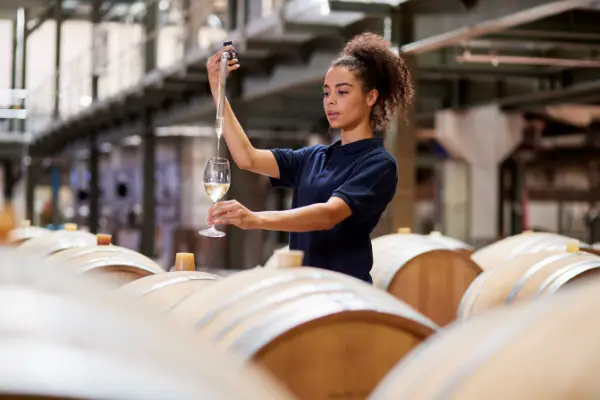There are several key steps to start a sustainable winery waste management business. With so many wineries, a niche for sustainable winery waste management businesses is wide open. The production of wine creates many valuable byproducts. Entrepreneurs are just beginning to see the potential profit in wine waste. Wineries have long been simply throwing away many byproducts like pomace, which is created in the production of wine. As an entrepreneur, you can easily see the massive potential in harvesting these sometimes unwanted byproducts. If you don’t want to start a brand new company from scratch, you can always revive a dying business. Read on to learn how to start a sustainable winery waste management business.
Explore Grape Waste Products
As a first step towards starting a sustainable winery waste management business, familiarize yourself with grape waste products. Harvesting wine waste has many significant benefits. The byproducts made in the production of wine include sources for acquiring natural antioxidants. Wine waste is also used to produce fertilizer. Pomace is used to create various profitable products including ethanol, tartaric acid, and grape seed oil. The profitable byproducts of wine production are not limited to the above. Surely, familiarize yourself with the products created from winery waste to establish a profitable and sustainable business.
Create A Plan To Capture Byproducts
Next, detail your business plan to acquire the valuable byproducts of the wine making process. Follow different methods to capture waste from the wine making process. Decide to either capture the byproducts from the process yourself, or source your waste products from active wine makers. Provide a solution for capturing waste to expand your market. Screening is a common method for separating valuable byproducts like lees and pomace. Also, use a centrifuge or filter to isolate the byproducts for sale. Surely, make a clear plan to gather valuable byproducts for your wine waste business.
Target Large Wineries
Third, target wineries with large output to harvest byproducts from. Under new legislation, the state of California has categorized wineries by five different tiers. The “de minimis” tier is the smallest and least regulated. They use less than 10,000 gallons of water a year to process their wines. The tier system goes up to define a Tier 4 facility as one that uses 100 times or more water than the lowest tier. Every year, these facilities make approximately 84,000 cases of wine. You can target the third of the market defined as “de minimis.” Of course, it is more efficient to target the larger wineries with higher regulation and more total output. Indeed, target large companies is a great strategy to start and drive wine business growth this year.
Sell The Harvested Waste Product
Further, sell the byproducts you’ve harvested from your winery waste business operations. Pomace can be used for compost, animal feed, and processed to be used as chemicals like tartaric acid. Although both compost and tartaric acid can both be reused at wineries, you can sell to a larger group of industries. The process of using pomace to produce ethanol is becoming increasingly efficient. Research production plants to sell to directly. You can also pay for a company to process your pomace and sell the produced ethanol for a higher price. Grapeseed oil and flour can be used in the pharmaceutical and cosmetic industries. Reach out to local companies who need these useful byproducts. With potential buyers abound, sell the many useful byproducts you’ve harvested.
Establish Clear Procedures For Following Technical Guidelines
Finally, set procedures to follow technical guidelines in your new winery waste business area. Research guidelines in your area and assess your client’s compliance before harvesting. Assist local wineries in becoming compliant when you harvest their byproducts. Wineries have various technical guidelines based on which services they provide. Establish customized procedures for each type of winery you decide to provide services. Transportation of wine waste products present their own set of challenges. Discern which areas you are willing to provide services to according to your capabilities. Of course, establish clear procedures for complying with technical guidelines in your local market.
To access an untapped market, start a sustainable winery waste management businesses. First, research grape waste products to gain insight into what product lines are profitable. Next, create a plan to capture the valuable byproducts you’ve already identified. Then, target large wineries to create a consolidated market from which you can harvest. Further, sell the waste products you’ve harvested to wine producers and other major industries. Finally, establish a clear set of guidelines to ensure your sourcing is legal, sustainable and efficient. These will also apply to running a restaurant for a long term success. Follow these steps to start a sustainable winery waste management business.
 Business First Family Business, Accounting, Finance, Investing, Marketing And Management
Business First Family Business, Accounting, Finance, Investing, Marketing And Management
